This article was co-authored by Lisa Bryant, ND and by wikiHow staff writer, Megaera Lorenz, PhD. Dr. Lisa Bryant is Licensed Naturopathic Physician and natural medicine expert based in Portland, Oregon. She earned a Doctorate of Naturopathic Medicine from the National College of Natural Medicine in Portland, Oregon and completed her residency in Naturopathic Family Medicine there in 2014.
There are 16 references cited in this article, which can be found at the bottom of the page.
This article has been viewed 20,353 times.
Cortisol helps regulate your blood pressure and blood sugar levels, fight off infections, and keep your metabolism working properly. When this important hormone gets too high or low, it can cause a variety of symptoms, like fatigue, weight changes, mood imbalances, and delayed healing. Cortisol is made in the adrenal glands, and severely low or high levels of cortisol can be a sign of an adrenal condition, such as Cushing’s disease or Addison’s disease. Luckily, cortisol imbalances are treatable with medications and good self-care, so getting tested is an important first step toward getting healthier and feeling better! If you’re worried about your cortisol levels, there are a variety of options for testing them in the convenience of your own home. Get a saliva, urine, or blood testing kit from your doctor, or buy one over-the-counter and send it to a lab for quick results. If your test results are worrisome or your doctor diagnoses you with a disease that affects your cortisol levels, see an endocrinologist (hormone specialist) to monitor and treat your condition.
Steps
Using a Saliva Test Kit
-
1Purchase a saliva test kit or get one from your doctor. One of the easiest ways to test your cortisol levels at home is with a saliva test kit.[1] Your doctor may provide a saliva test kit to take home with you, or you can purchase an over-the-counter saliva test kit online or from a drugstore.
- Commercial saliva test kits that test cortisol levels include the ZRT salivary test kit, the HealthConfirm Stress Hormone Plus kit, and the Everlywell Women’s Health Test.
- According to their manufacturers, these test kits are all processed by CLIA (Clinical Laboratory Improvement Amendments)-certified labs.
-
2Take the test at the time(s) specified in your test instructions. Your cortisol levels change throughout the day, so your doctor or the manufacturer or your test kit may recommend collecting your sample at a specific time of the day or night. Some saliva tests are collected between 11 p.m. and midnight, when your cortisol levels are relatively low.[2] Other kits recommend testing first thing in the morning, while your cortisol levels are at their highest, and again in the late afternoon (around 4 p.m.) when your levels are lower. Check the test instructions carefully or ask your doctor when to collect the sample.
- Some test kits, such as the HealthConfirm Stress Hormone Plus kit, require you to collect samples at several times throughout the day.
Advertisement -
3Avoid eating, drinking, or brushing your teeth before sampling. Eating, drinking, or brushing your teeth 15-30 minutes before taking the sample could make the results less accurate. If you need to have a snack or brush your teeth, time it so that it won’t interfere with your scheduled time for collecting the sample.[3]
- Some test kits may instruct you to rinse your mouth with cool water before collecting your sample.
-
4Remove the cap from the saliva collection tube. Most cortisol saliva test kits consist of a tube containing a collection swab. Uncap the tube so that the swab is exposed, and be very careful not to touch the swab with your fingers.[4]
- Touching the swab could contaminate it and interfere with the test results.
-
5Insert the collection swab into your mouth to collect the saliva. Tip the tube so that the swab slides into your mouth. Roll it around in your mouth for about 2 minutes so it gets saturated with saliva. When you’re done, spit it back into the tube.[5]
- Don’t chew on the swab while it’s in your mouth.
- Some over-the-counter test kits require you to spit directly into the collection tube rather than using a swab.
-
6Recap the tube tightly. Push the cap back on and make sure it is secure. This will prevent the sample from leaking out or getting contaminated.[6]
- If the kit came with a special envelope or sample collection bag, place the tube inside and seal it.
-
7Record the exact time and date of collection on the label. After collecting your sample, fill out any requested information. This will likely include your full name, the date, and the exact time of collection.[7]
- You may need to put this information on the sample tube label and on a separate information sheet.
-
8Return the collection tube to the lab within 24 to 48 hours. Send the sample back to the lab or return it in person as quickly as possible. Holding onto the sample for too long could affect the results.[8]
- If you aren’t able to send in the sample immediately, store it in the refrigerator until you’re able to do so.[9]
- Once the lab receives and processes the sample, you should get your results from the lab or your healthcare provider within a few days.
Doing a 24-hour Urine Test
-
1Avoid doing vigorous exercise before you start the test. Another way to test cortisol levels is to collect all your urine over a 24-hour period. Refrain from exercising for at least 24 hours before the test starts, since this could affect your cortisol levels.[10]
Did you know? While low-intensity exercise can reduce your cortisol levels, moderate or high-intensity exercise places physical stress on your body, causing your cortisol levels to temporarily increase.[11]
-
2Ask your doctor if you should stop taking any medications before the test. Some medications can affect the results of a urine cortisol test. Before you begin the test, ask your doctor if you need to temporarily discontinue any of your medications. If so, ask how long in advance you need to stop taking them.[12]
- Never stop taking any of your regular medications unless your doctor advises you to do so.
- Medications that might affect your test results include anti-seizure drugs, hormone-based medications (such as birth control pills or hormone replacement drugs), and steroids.
-
3Get a urine collection container from your doctor or testing lab. Your doctor or the test lab will provide a special container, such as a bag or plastic jug, in which to collect your urine.[13] To make collection easier, they might also provide a “hat” or collection bowl that fits into your toilet. Ask for instructions about how to use the collection container.
- Some over-the-counter home cortisol test kits, such as the Everlywell Sleep & Stress Test, come with a smaller collection container. You may only be required to collect samples a few times throughout the day.
-
4Urinate into the toilet when you get up in the morning. At the beginning of your testing period, urinate into the toilet and flush as you usually would. Don’t collect your first urine of the morning.[14]
- Early morning urine is typically more highly concentrated than urine that you produce throughout the day, which can skew the test results.
-
5Use the collection container any time you urinate for the next 24 hours. Aside from your first urine of the morning, any urine you produce for the rest of the test period should go directly into the test container. This way, the lab can test for the total amount of cortisol that collects in your urine throughout the day.[15]
- When you get up the next morning, urinate into the toilet and flush it as you normally would.
- Your doctor or the lab may provide more than one collection container in case you completely fill the first in less than 24 hours.
-
6Keep the collection container in your refrigerator between uses. To prevent the urine from decomposing, place it in the fridge any time you’re not using the container.[16] If you’re not happy with the idea of putting the container directly into your fridge along with your food, put it inside a plastic bag and tie it shut first.
- Another option is to keep the container in a cooler with some ice. Check occasionally to make sure the ice hasn’t melted, and replace it as needed.
-
7Return the collection container to the lab as instructed. You’ll likely need to label the container with information such as your name, the date, and the start and end times of the collection period. Take the sample back to the lab or mail it to the address indicated on your collection kit.[17]
- Return the sample to the lab as soon as possible after you’ve finished collecting the sample.
Collecting a Finger-Prick Blood Sample
-
1Purchase a cortisol blood test kit. When you get a cortisol test in a lab or doctor’s office, it’s usually done in the form of a blood test.[18] There are a few home testing kits on the market that will allow you to collect your own blood sample using the finger stick method.
- Home test kits that test cortisol levels in your blood include the Forth Cortisol kit and the LetsGetChecked Cortisol test.
- Check the instructions on your kit to find out what time of day is best for collecting your sample.
-
2Wash your hands with soap and warm water. Washing your hands will rinse away germs and make the blood collection process more hygienic. Getting your fingers warm will also improve circulation and make it easier for you to collect blood with the finger stick. Use soap and water that is warm or comfortably hot.[19]
- Dry your hands on a clean towel when you’re done.
- You can also use a hand warmer to warm up your fingers.
-
3Select the third or fourth finger on your non-dominant hand. Choose a finger your non-dominant hand, or the hand you use least often, for the collection site. This way, your dominant hand will be free to operate the lancet. Typically, the third or fourth fingers (middle or ring finger) work best.[20]
- For example, if you are right-handed, you might choose to collect your sample from the ring finger on your left hand.
-
4Clean your fingertip with an alcohol swab. The collection kit should include an alcohol wipe. Swab the tip of your selected finger with the wipe to sterilize it.[21]
- If your kit doesn’t include an alcohol wipe, you can use a wipe from a first aid kit or put 70% isopropyl alcohol on a clean cotton wipe or gauze square.
-
5Dry the area with a clean tissue or gauze wipe. Use a dry tissue or wipe to rub away all the alcohol. Make sure your hand is completely dry before you proceed with the collection.[22]
- Your collection kit may include a gauze wipe for this purpose.
-
6Remove the cap from the lancet. Once you’re ready to collect the blood, twist or pull the protective cap off the lancet. This will reveal a small, spring-loaded needle that you’ll be using to puncture your skin and collect the blood.[23]
- Always use a fresh, sterile lancet to perform a finger stick test.
-
7Press the lancet against the side of your fingertip to puncture your skin. Press the lancet tip to the rounded end of your selected fingertip. Position it slightly to either side instead of directly in the middle of your fingertip, which is a more sensitive area. Push firmly on the trigger at the top of the lancet to prick your finger.[24]
- You will feel some pressure and a slight sting when the lancet pierces your skin.
Tip: If you don’t have an official sharps disposal container, you can throw away used lancets in a sealed plastic container, such as an empty milk jug or laundry detergent bottle. Search for local biohazard disposal guidelines in your area to find out if you can dispose of the container in the regular trash.[25]
-
8Wipe away the first drop of blood with a clean tissue. Once you’ve pricked your fingertip, a bead of blood should appear. Use a dry gauze wipe or tissue to wipe it away.[26]
- Don’t wipe your finger with an alcohol wipe. Make sure the wipe you use is clean and dry.
-
9Squeeze your finger gently to release blood into the collection tube. Carefully massage your finger to encourage drops of blood to flow out and into the collection tube. Point your finger straight down, toward the floor, to help the blood flow to your fingertip more easily. Alternate between squeezing and releasing your finger so that blood can flow back into your fingertip between squeezes. Continue to do this until the tube is filled to the indicated level.[27]
- For some blood collection tubes, you may need to touch your fingertip to the side of the tube and let the blood flow in. Others may require you to hold your finger above the tube and allow the drops to fall in.
- Avoid squeezing too hard or wiping your fingertip on the side of the tube, since this could damage the blood cells.
- If you don’t manage to collect enough blood, get a fresh lancet and prick another spot on the same finger. You can also try using a different finger if you prefer.
- If your finger is still bleeding when you’re done, put on a bandaid and apply gentle pressure for 30 seconds.
-
10Cap the tube and gently invert it 5-10 times. Once you’ve collected your blood sample, firmly attach the cap. Gently flip the tube over 5-10 times to mix the contents of the tube. Alternatively, you can gently swirl the tube during and after the collection process.[28]
- Don’t shake the tube hard, since this could damage the sample.
-
11Place the tube in a supplied bag and apply any required labels. Your kit will likely include a biohazard bag and some labels to fill out. Write out any requested information, such as your full name, date of birth, and the time and date of collection.[29]
- If you need to mail the sample, you may be required to put a biohazard sticker on the outside of the mailing box or envelope.
-
12Send the sample to the lab as soon as possible. Package up the collection tube as instructed on your kit and send it to the lab for testing. Do this as soon as you can so that the sample doesn’t have time to decompose.
- Ideally, you should perform the test on a weekday before the end of the week so that it arrives at the lab on a business day.
Understanding Your Test Results
-
1Talk to your doctor about your test results. If you use an over-the-counter home testing kit, you should receive results within a few days. While the lab can tell you whether your cortisol levels are higher or lower than normal, you’ll need to discuss the results with your doctor to find out what they mean. Don’t rely on the test results alone to determine if you have a medical problem.[30]
- Bring a copy of your results to your doctor’s office or have the lab forward them.
- Call your doctor’s office and explain that you had the test done and are interested in following up about the results.
-
2Get tested for Cushing syndrome if your cortisol levels are high. Unusually high cortisol levels may be a sign of Cushing syndrome, a condition that causes your body to produce too much cortisol. Cushing syndrome is a serious health condition, so see your doctor right away for an assessment if you suspect you may have it. In addition to high cortisol levels, common symptoms include:[31]
- Weight gain, especially in the face, upper back, shoulders, and neck
- Purplish stretch marks on your belly, thighs, chest, or arms
- Slow healing of cuts and lesions
- Skin that’s thin, fragile, or bruises easily
- Acne
-
3Ask about testing for Addison’s disease if your levels are low. Addison’s disease is a disorder of the adrenal gland that causes it to become underactive. Talk to your doctor about getting tested for Addison’s disease or another adrenal gland condition if your cortisol levels are unusually low. Symptoms of Addison’s disease include:[32]
- Severe fatigue
- Weight loss or decreased appetite
- Low blood pressure or fainting
- Low blood sugar
- Salt cravings
- Darkening of the skin
- Nausea, vomiting, or diarrhea
- Pain in your abdomen, muscles, or joints
- Loss of body hair
- Irritability, depression, and unusual behavior
-
4Discuss other possible reasons for unusual cortisol levels. High or low cortisol can also be the result of a variety of other factors, so don’t assume that you have a particular health condition based on your test results. Your doctor will want to examine you, do further tests, and ask questions to determine the most likely cause. Other causes of unusual cortisol levels include:[33]
- Severe stress
- Pregnancy
- Certain medications, such as hormonal birth control pills
- Infections
- Adrenal tumors
References
- ↑ https://www.mhealth.org/Patient-Education/Articles/English/i/n/s/t/r/Instructions_for_Collecting_Saliva_Cortisol_Sample_524359
- ↑ https://www.nationwidechildrens.org/family-resources-education/health-wellness-and-safety-resources/helping-hands/saliva-cortisol-test-collection-guidelines
- ↑ https://www.nationwidechildrens.org/family-resources-education/health-wellness-and-safety-resources/helping-hands/saliva-cortisol-test-collection-guidelines
- ↑ https://www.mayocliniclabs.com/it-mmfiles/Cortisol_-_Saliva_Collection_Instructions.pdf
- ↑ https://www.mayocliniclabs.com/it-mmfiles/Cortisol_-_Saliva_Collection_Instructions.pdf
- ↑ https://www.mayocliniclabs.com/it-mmfiles/Cortisol_-_Saliva_Collection_Instructions.pdf
- ↑ https://www.mayocliniclabs.com/it-mmfiles/Cortisol_-_Saliva_Collection_Instructions.pdf
- ↑ https://www.mayocliniclabs.com/it-mmfiles/Cortisol_-_Saliva_Collection_Instructions.pdf
- ↑ https://www.nationwidechildrens.org/family-resources-education/health-wellness-and-safety-resources/helping-hands/saliva-cortisol-test-collection-guidelines
- ↑ https://www.ucsfhealth.org/medical-tests/cortisol-urine-test
- ↑ https://www.ncbi.nlm.nih.gov/pubmed/18787373
- ↑ https://www.ucsfhealth.org/medical-tests/cortisol-urine-test
- ↑ https://www.ucsfhealth.org/medical-tests/cortisol-urine-test
- ↑ https://medlineplus.gov/ency/article/003425.htm
- ↑ https://www.hopkinsmedicine.org/health/treatment-tests-and-therapies/24hour-urine-collection
- ↑ https://www.hopkinsmedicine.org/health/treatment-tests-and-therapies/24hour-urine-collection
- ↑ https://www.hopkinsmedicine.org/health/treatment-tests-and-therapies/24hour-urine-collection
- ↑ https://medlineplus.gov/lab-tests/cortisol-test/
- ↑ https://help.grassrootslabs.com/article/50-finger-prick-blood-collection-instructions
- ↑ https://help.grassrootslabs.com/article/50-finger-prick-blood-collection-instructions
- ↑ https://www.labme.ai/wp-content/uploads/2020/10/Instruction-LabMe-V.2.pdf
- ↑ https://www.childrenscolorado.org/globalassets/healthcare-professionals/collection-instructions-home-finger-stick.pdf
- ↑ https://www.childrenscolorado.org/globalassets/healthcare-professionals/collection-instructions-home-finger-stick.pdf
- ↑ https://www.labme.ai/wp-content/uploads/2020/10/Instruction-LabMe-V.2.pdf
- ↑ https://safeneedledisposal.org/wp-content/uploads/2017/11/Sharps-FAQ-11.6.17.pdf
- ↑ https://www.childrenscolorado.org/globalassets/healthcare-professionals/collection-instructions-home-finger-stick.pdf
- ↑ https://www.labme.ai/wp-content/uploads/2020/10/Instruction-LabMe-V.2.pdf
- ↑ https://www.childrenscolorado.org/globalassets/healthcare-professionals/collection-instructions-home-finger-stick.pdf
- ↑ https://www.childrenscolorado.org/globalassets/healthcare-professionals/collection-instructions-home-finger-stick.pdf
- ↑ https://medlineplus.gov/lab-tests/cortisol-test/
- ↑ https://www.niddk.nih.gov/health-information/endocrine-diseases/cushings-syndrome
- ↑ https://my.clevelandclinic.org/health/diseases/15095-addisons-disease
- ↑ https://medlineplus.gov/lab-tests/cortisol-test/
- ↑ https://www.reuters.com/article/us-cortisol-testing-smartphones/smartphones-allow-do-it-yourself-stress-hormone-tests-idUSKBN0F91R820140704
- ↑ https://news.stanford.edu/press/view/22139
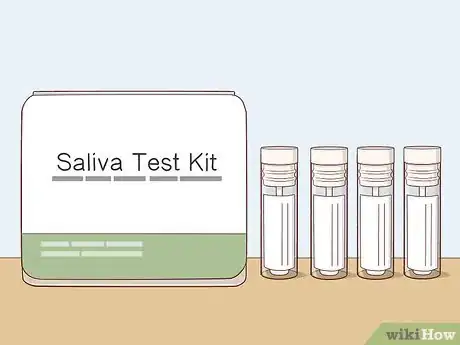
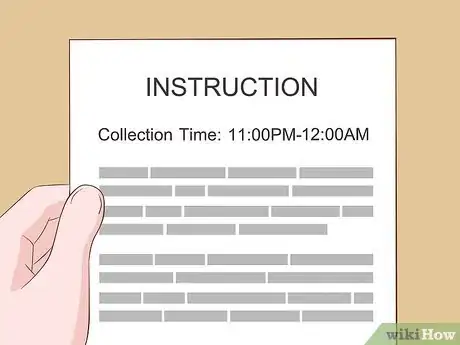

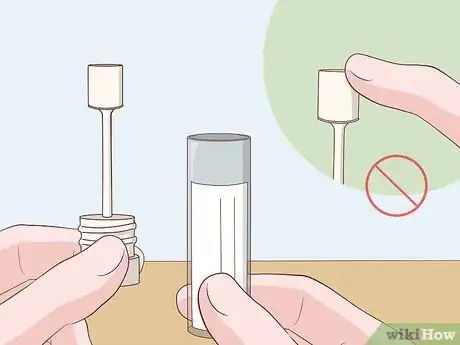
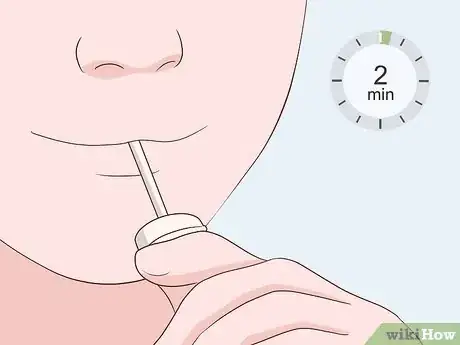
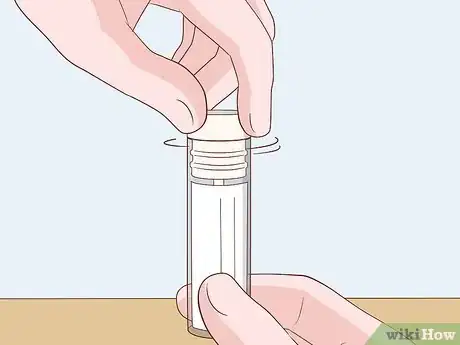
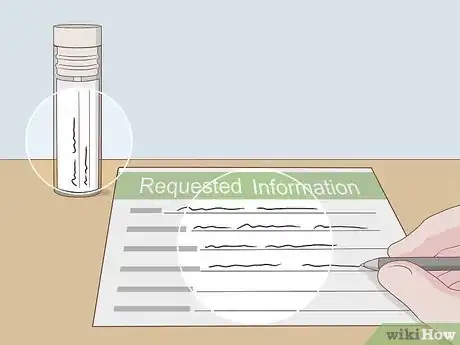
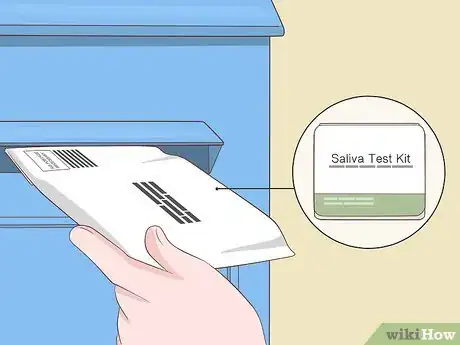

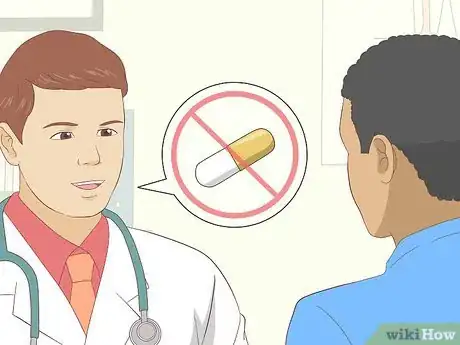
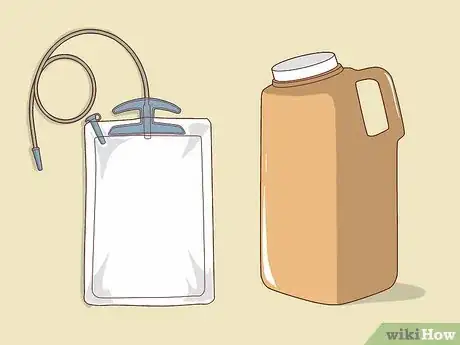




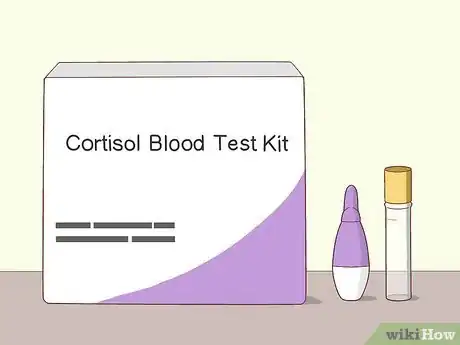
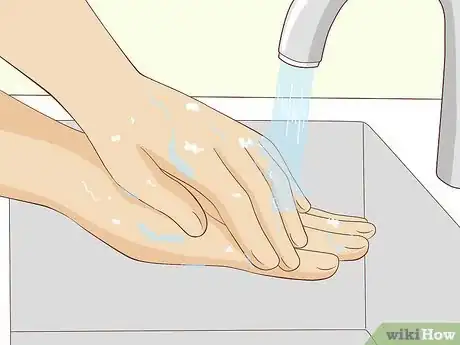



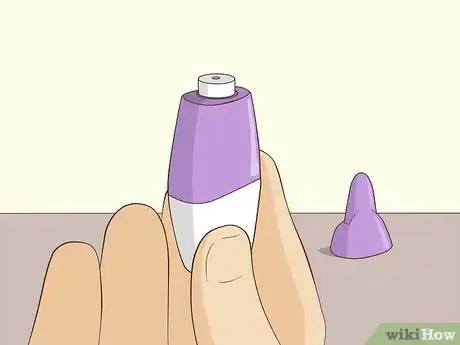
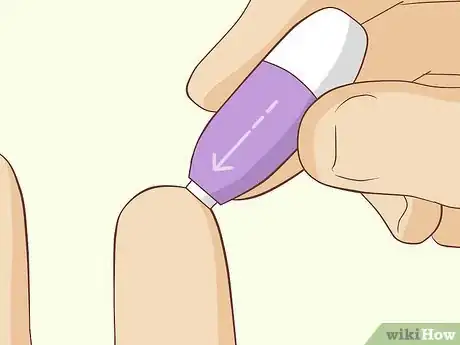
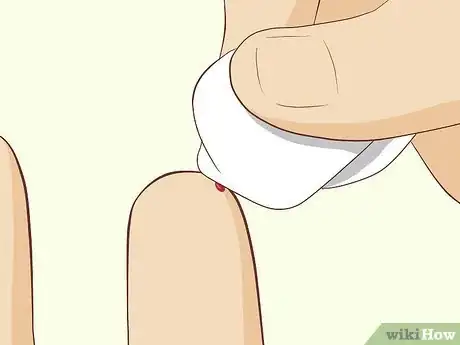
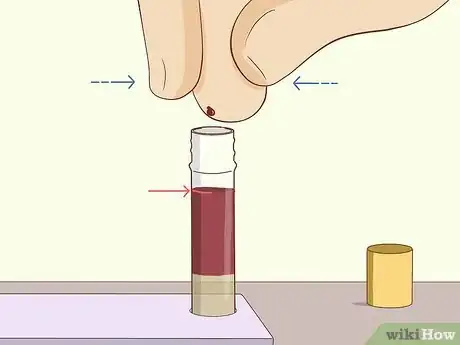
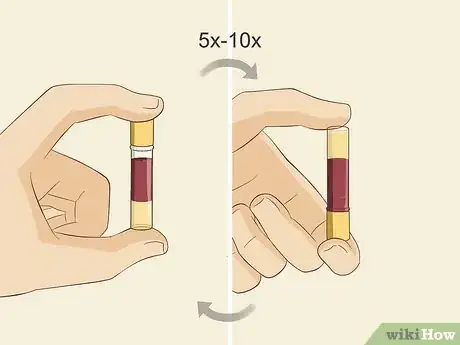
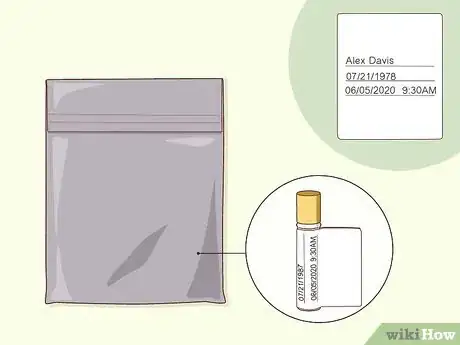








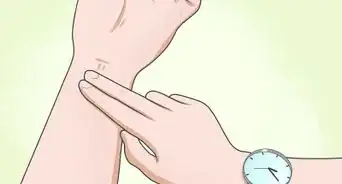
-Step-3-Version-3.webp)














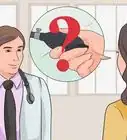






































Medical Disclaimer
The content of this article is not intended to be a substitute for professional medical advice, examination, diagnosis, or treatment. You should always contact your doctor or other qualified healthcare professional before starting, changing, or stopping any kind of health treatment.
Read More...